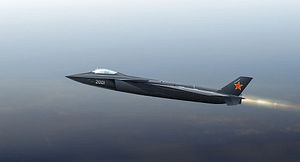The city of Zhuhai in China’s Guangdong province is hosting the 11th China International Aviation & Aerospace Exhibition, also known as the Zhuhai Airshow, which started on November 1. The show will last through November 6 and show off a range of aviation platforms, both from China and other countries.
The airshow, held in even-numbered years, has served as a “coming out” of sorts for several major Chinese People’s Liberation Army Air Force (PLAAF) assets. In 2012, for example, China unveiled the Shenyang J-31 fighter at the show.
This year, Beijing showed off its fifth-generation Chengdu J-20 stealth fighter, which has drawn considerable interest among watchers of the Chinese military for some years now.
The PLAAF had confirmed via its official Weibo microblog that the J-20 would fly at Zhuhai. Shen Jinke, a spokesperson for the PLAAF, said that the jet will serve the PLAAF’s mission to “safeguard sovereignty and national security.”
“This is the first public appearance of China’s indigenously manufactured new generation stealth fighter jet,” the PLAAF said.
The J-20 was developed as a foil to advanced U.S. fighters, including fourth generation F-16 Fighting Falcons and F/A-18 Hornets and, more directly, fifth-generation F-22 Raptors and F-35 Lightning fighters.
In 2009, a breach of F-35 project resulted in the theft of several terabytes of data. Though the attack was never publicly attributed to China by the U.S. government, visual similarities in the chassis of the J-20 to the F-35 have led commentators to speculate that the stolen F-35 intellectual property helped state-owned Chengdu Aerospace Corporation develop their fighter.
The J-20’s combat capabilities are unproven, but it is believed to serve the role of the PLAAF’s primary strike fighter going forward, potentially filling an air superiority and long-range strike role as well.
China’s other modern stealth fighter, the Shenyang J-31, is primarily poised to compete with U.S. and Russian offerings on the international market.
The twin-engine J-20 is 20 meters long, with a 13 meter wingspan. The jet is rated at a top speed of 2,100 kilometers per hour. The J-20 has been in flight testing since 2011 and is expected to enter service later this decade. A small number of J-20 units are believed to have entered production in December 2015.
Operationally, the J-20’s wide fuselage is thought to enable considerable internal fuel storage, enabling long-range strike missions that could give the PLAAF considerable reach across the first island chain. This could prove critical in any future conflict over Taiwan or with Japan.

































